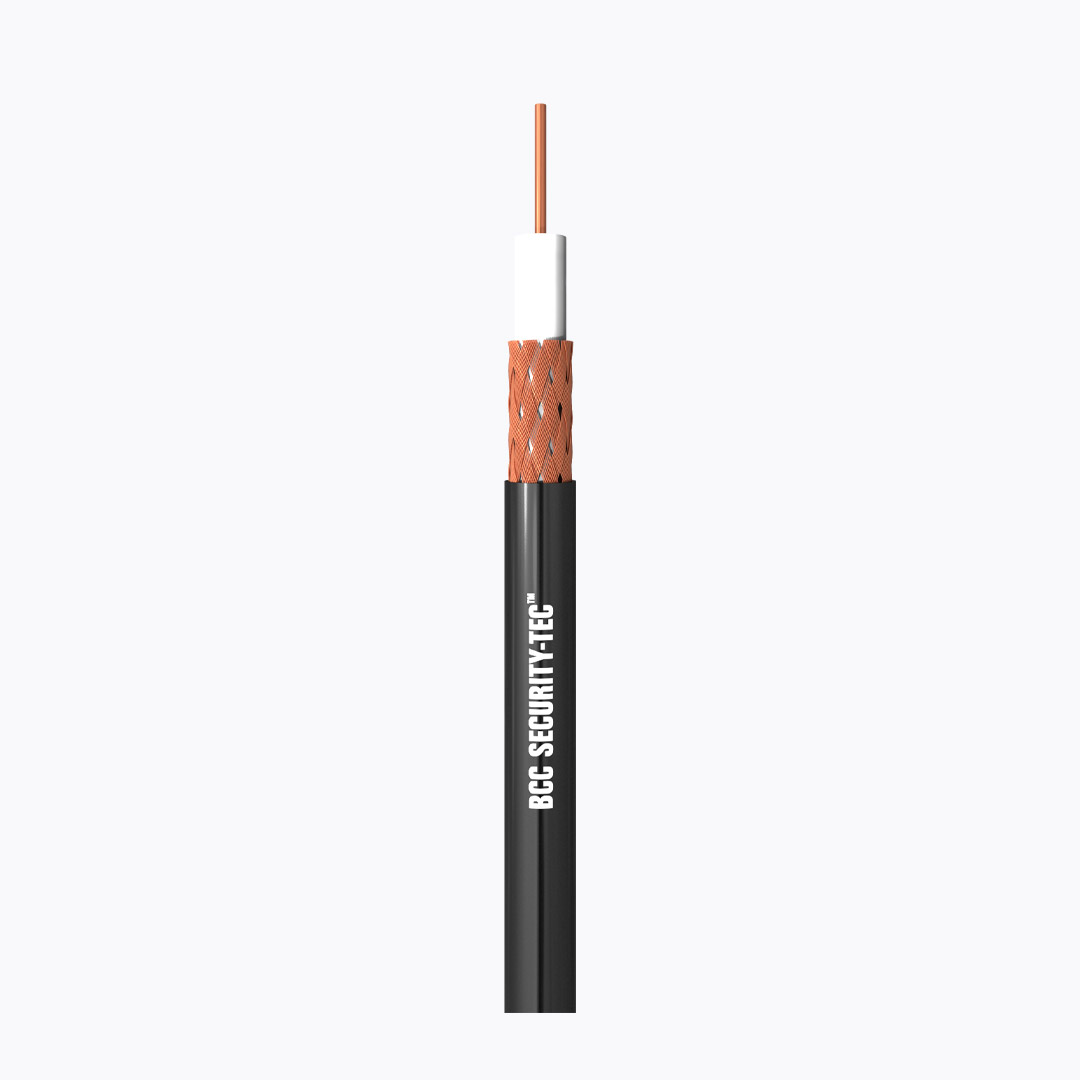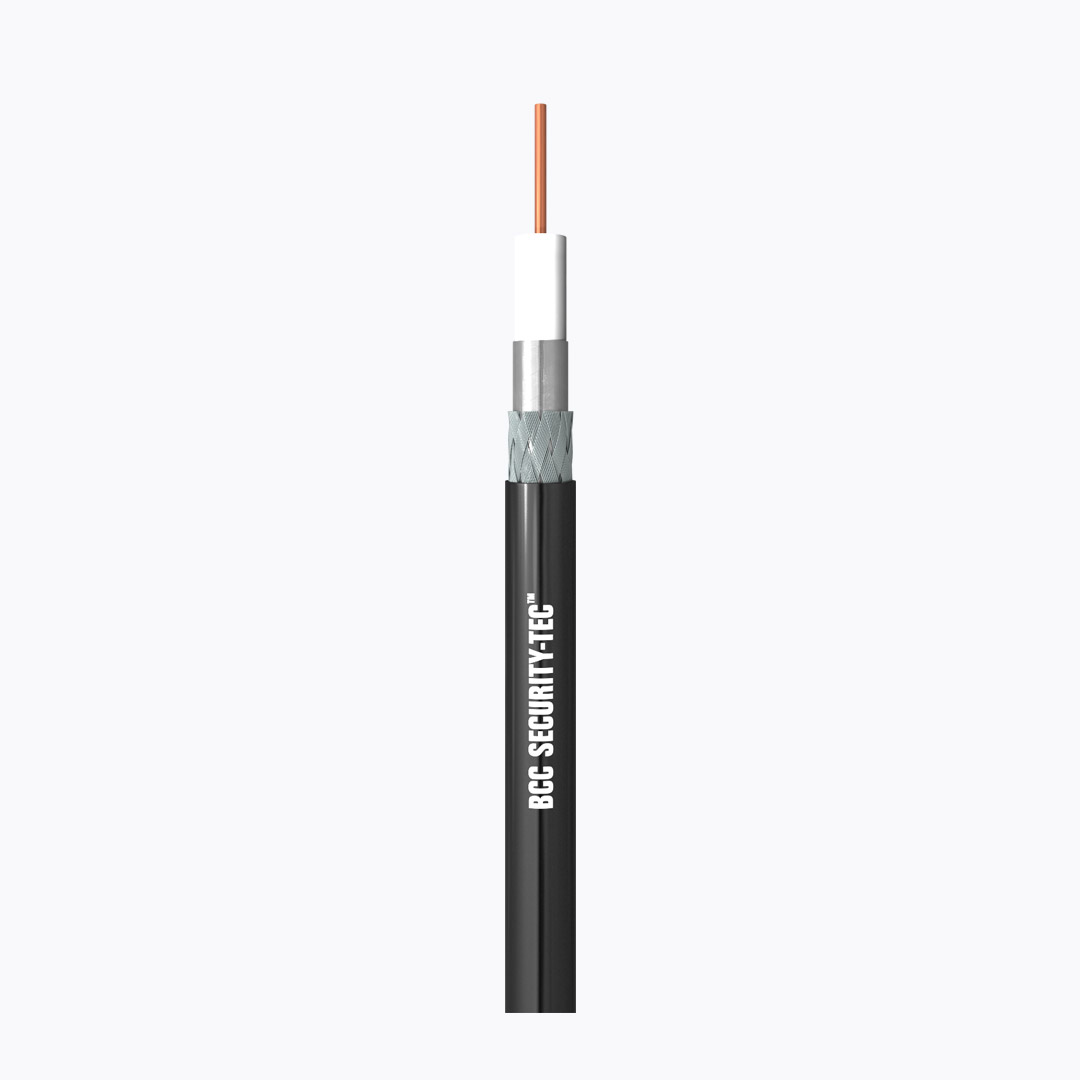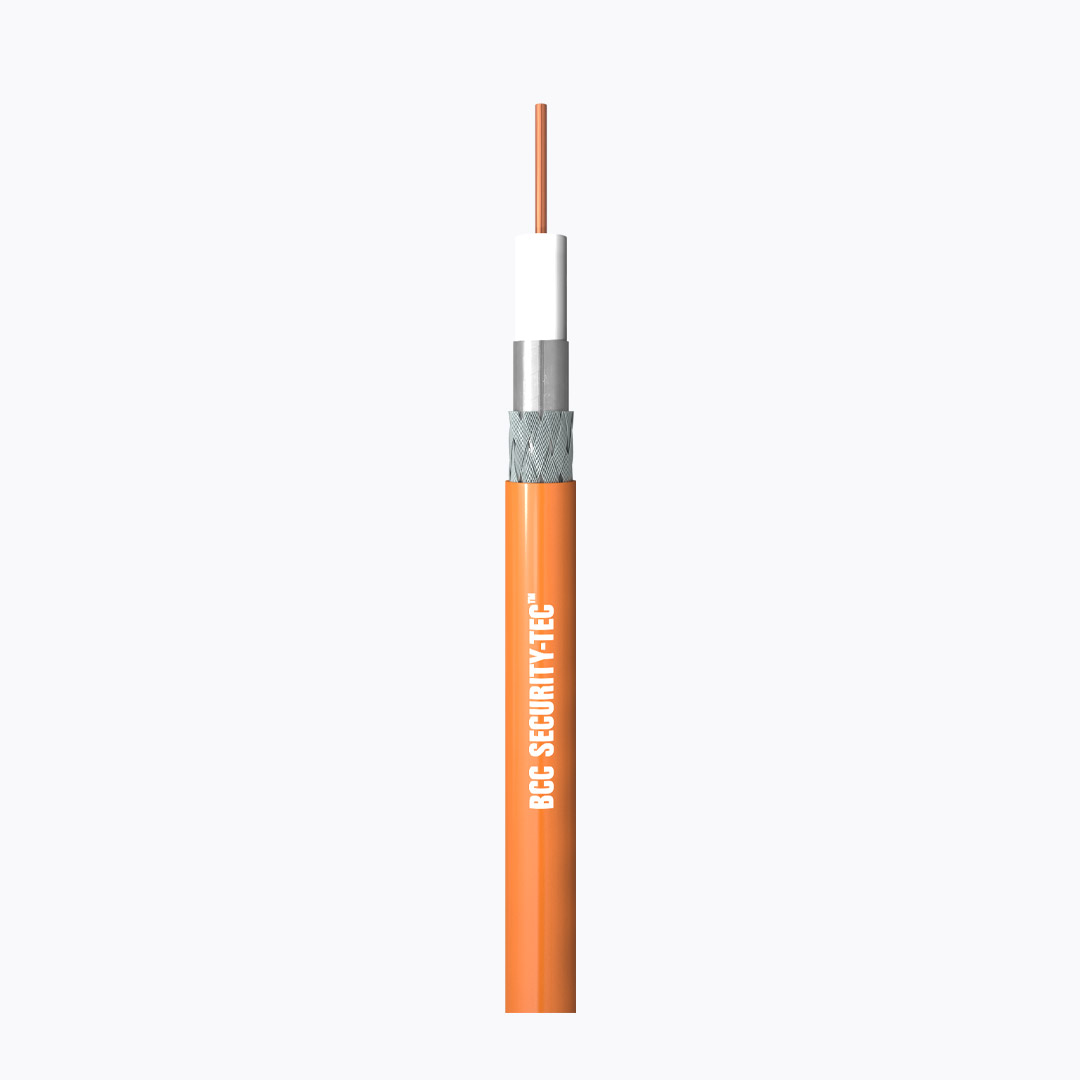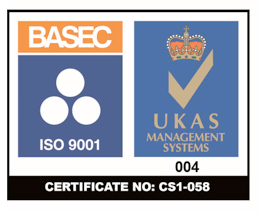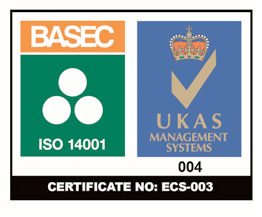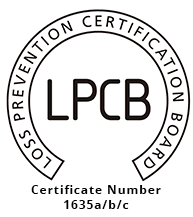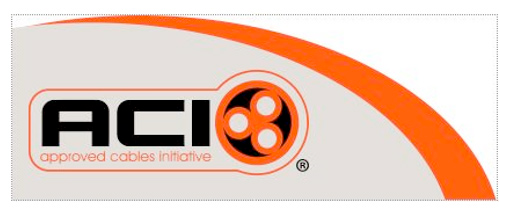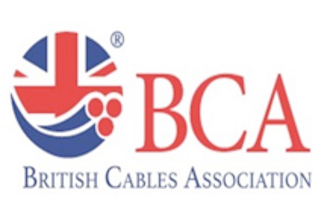
Coaxial Cable
BCC-Security-Tec™ Coaxial Cables
Coaxial cables are designed to carry radio frequency current of a much higher frequency than the 50 or 60 Hz used in low voltage cables. And this requires special construction to prevent power losses. If an ordinary wire is used to carry high frequency currents, the wire acts as an antenna, and the high frequency currents radiate off the wire as radio waves, causing power losses. To prevent this in coaxial cable, one of the conductors is formed into a tube and encloses the other conductor. This confines the radio waves from the central conductor to the space inside the tube.
To prevent the outer conductor, or shield, from radiating, it is connected to electrical ground, keeping it at a constant potential.
The dimensions and spacing of the conductors must be uniform throughout the length of the cable. Any abrupt change in the spacing of the two conductors along the cable tends to reflect radio frequency power back toward the source. This acts as a bottleneck, reducing the amount of power reaching the destination end of the cable.
CCTV: Closed Circuit Television is the use of video cameras to transmit a signal to a specific place, on a limited set of monitors
SMATV: Satellite Master Antenna Television used to deliver signals to multiple dwelling units (e.g., apartment buildings and trailer parks).
CATV: Central Antenna Television = Cable television is a system of providing television to consumers via radio frequency signals transmitted to televisions. Nowadays also used for internet and telephone.
HDTV: High-definition television refers to video having resolution substantially higher than traditional television systems.
Telecom and networking: A number of special cable constructions.
Choosing the correct coax cable?
Most coaxial cables for video applications have a nominal impedance of 75 ohms. Their differing electrical and physical characteristics make it important to select the correct type of cable to suit the application.
| Analogue TV | RG59 | Acceptable performance on cable runs < 225 metres |
| RG6 | Gives superior performance on cable runs 225 metres but < 545 metres. | |
| RG11 | For cable runs greater than 545 metres. | |
| CCTV | RG59 | Acceptable performance on cable runs < 225 metres |
| RG6 | Gives for superior performance on cable runs 225 metres but < 545 metres. | |
| RG11 | For cable runs greater than 545 metres. |
This table is for reference only.
